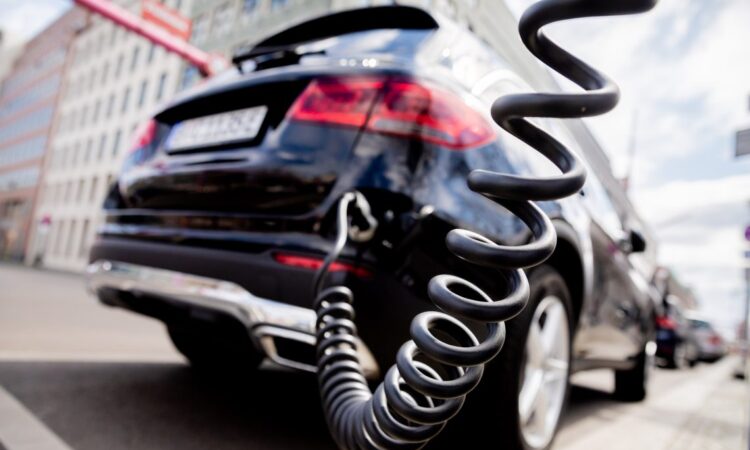
In its rush to electrify transportation, Brussels is pushing Europe’s prized automotive industry into a competitive trap.

In a nutshell
- New EU tariffs on electric vehicles from China signal a competitive defeat
- It is a result of Brussels’ attempt to lead the world in climate protection
- Costs of this strategic blunder will fall on consumers and companies
The electric vehicle (EV) revolution has cast a long shadow on the future of Europe’s automotive industry. As the European Union has committed to a rapid transition to renewable energy, including the electrification of transport and banning sales of new passenger cars with internal combustion engines by 2035, its car manufacturers have discovered that they are no match for their Chinese competitors.
This unfortunate situation is the result of a series of poor strategy decisions by EU authorities. First, they assumed that trying to prevent climate change would be preferable to adapting to worsening atmospheric conditions. Next, Brussels thought that a crucial part of the solution would consist of radically eliminating carbon dioxide (CO2) emissions and that Europe should lead the effort. (In 2021, the EU area accounted for less than 10 percent of the world’s emission of that greenhouse gas.) And finally, Brussels’ ruling technocrats have decided that the climate mitigation efforts should focus on the automotive and construction industries.
Not surprisingly, the cost of this transition is far from evident, but it has been clear from the start that it would be immense. The expense of designing electric propulsion systems and erecting new factories to build them is considerable. In 2022, it was estimated that producing an electric vehicle would be 50 percent more expensive than making a conventional car. Over time, showroom prices will undoubtedly rise, and the new global competitive picture will create winners but also claim many victims – including those who will not have the means to acquire personal transportation.
The probable motives of governments in other parts of the globe aside, there is not much doubt that the EU strategy makes little economic sense.
Anatomy of the blunder
However, the European Commission launched an investigation into Chinese state support for its electric vehicle industry in 2023, citing concerns that Beijing is dumping subsidized vehicles on the European market. Preliminary findings indicated that tariffs of 50 percent on EVs made in China would be needed to inflict tangible pain on the Asian exporter.
In June, Brussels finally decided to impose an additional tariff on electric vehicles made in China and imported into the EU of up to 38 percent, and followed up by opening the possibility of increasing it further to 48 percent.
Facts & figures
Europe is not alone
In May 2024, the United States announced that its 25 percent tariff on Chinese-made EVs would increase to 100 percent, plus some other extra costs; Turkey, in early July, added a 40 percent or $7,000 minimum per-car tariff on all vehicles made in China.
BRICS founding member Brazil is phasing in tariffs on all imported electric and hybrid vehicles of 10 percent since the start of this year, then 18 percent as of July, and finally, 35 percent in 2026, while fellow BRICS member South Africa levies a 25 percent duty on imported EVs.
One result of the tariffs in disparate countries is that some Chinese alternative-energy carmakers are concluding that exports from China are unsustainable long term, and moving production to target markets is inevitable. Chinese companies have announced they will be manufacturing in Hungary for the European market, in Brazil for South America, while Pretoria is hopeful that some electric car manufacturing will move to South Africa.
The probable motives of governments in other parts of the globe aside, there is not much doubt that the EU strategy makes little economic sense. It can be understood as an effort to justify the presence of large technocratic bodies in search of a policy-making role and new agendas. Such developments deflect attention from critical issues that officials in Brussels have been unable or unwilling to tackle (public finance and immigration), from goals they have been unable to promote (such as free trade) or from crises that they have created themselves (price inflation and overregulation).
Read more on trade issues
To be sure, carmakers share part of the blame. The European auto industry is a textbook example of an effective lobby. It is highly concentrated and involves vast amounts of money. Its members are few enough to allow effective coordination. Their prospective profits and losses are large enough to encourage them to create and protect their privileges, and their size in terms of employment, turnover and tax revenues cannot be ignored by national governments. However, the industry initially decided to accept the EU climate change mitigation vision without putting up much of a fight.
Short-sighted calculations
Two lines of reasoning contributed to that decision. One was about the industry’s access to significant subsidies – direct or indirect, depending on whether the immediate beneficiaries were the producers or the consumers. The other involved protectionism – should non-EU competitors acquire new market share in Europe? One may also speculate that a few European carmakers were trying to have the best of both worlds: pocketing subsidies from Brussels while taking advantage of a protected European market and circumventing regulatory constraints by moving production away from the old continent.
What went wrong?
Overall, the European car industry is in relatively good shape – for now. According to 2023 data, the EU is a net car exporter to the world. Its share in global automotive production in that year was 16 percent, behind China’s 33 percent but ahead of both Japan and the U.S., at 10 percent each. Last year, new car sales rose in almost all European markets, Germany being the most notable exception.
European producers are falling behind: their technology and their speed of technological innovation are disappointing, and the costs are too high.
The big news, however, is that exports of Chinese cars are soaring. Last year in Europe, auto imports from China rose about 40 percent in volume and slightly less in value. Moreover, and in contrast with what Brussels expected, overall sales of battery-powered vehicles declined, especially in Germany. At the same time, Chinese producers’ market share in this segment in Europe has risen from 1 percent in 2019 to 8 percent early this year. It is expected to reach 15 percent by late 2025.
Facts & figures
The data shows that subsidies have been insufficient to persuade European producers and consumers to move to fully electric vehicles, and European producers are falling behind: their technology and their speed of technological innovation are disappointing, and the costs are too high.
Is the news hidden in Europe’s soaring car sales bad enough to explain levying tariffs on Chinese car imports to Europe? Also, what can one expect to transpire? A significant issue needs to be addressed first, and the range of possible answers will define future scenarios.
The car industry’s belated protests
In an interesting twist, significant European automotive manufacturers, including Volkswagen, Mercedes-Benz and Stellantis, recently criticized the new tariffs. This reaction comes a little late, but it is understandable given that EU producers have invested heavily in Chinese clean energy technologies. Many have also developed joint-production agreements that would enable them to stay competitive, albeit dependent on their Chinese partners.
Trade barriers have now become a tool to punish all global companies and those who choose to relocate outside the EU.
Profits would come from China-based facilities and partnerships, and subsequently, the Chinese cars would be moved through the European carmakers’ dealer networks. The European Commission is damaging European consumers, who will pay higher prices for their vehicles. It has also probably turned sizable European investments in the Chinese car industry and clean technologies into money losers and exposed European exporters to likely retaliation by Beijing.
Fortress Europe
One explanation for this self-defeating protectionism and the belated reaction from the big businesses involved is that the European carmakers somehow failed to anticipate the likely European Commission decision.
The commission, in fact, aims to strengthen “Fortress Europe,” and tariffs kick in almost automatically when a foreign exporter reaches a threshold in a vital sector. The justifications for Fortress Europe are well-known. It is meant to protect European jobs, prevent “delocalization” (moving economic activity from Europe to more business-friendly locations) and – a true stretch – create European industry champions regulated by a central technocracy.
Therefore, according to the EU’s thinking, the June tariffs are justified: They shield European companies from harm at the expense of those who develop CO2-intensive production overseas and try to kill European jobs.
Scenarios
Three scenarios emerge that are not mutually exclusive. Resorting to tariffs reveals the intrinsic weakness of the European car industry. If the coming years confirm this weakness, which is very likely, Europeans should brace for radical strategy changes. Either Brussels accepts that its CO2 policy is going to kill large chunks of European manufacturing, or it scales back its clean energy projects and allows the market to decide which designs and technologies best serve consumer interests.
Looking forward, will the EU bureaucracy be willing to mow down the continent’s manufacturing firms and punish consumers rather than lose face? Probably, it will, especially if higher government revenues through tariffs turn out to be irresistible.
Possible: Brussels punishes big European businesses that manufacture elsewhere
In the past, the European Commission used to aim at big foreign businesses while finding compromises with large local corporations. However, trade barriers have now become a tool to punish all global companies and those who choose to relocate, even partially, outside the EU. Car manufacturers have been slow to read the fine print that was there all along.
Likely: Europeans consent to tariffs on Chinese imports and EU subsidies
Under this script, the recent complaints against China’s business practices are merely designed to prepare the ground for a new wave of subsidies to European consumers, producers, or both. One may also submit that the import duties are not punitive after all. Today’s Chinese EVs (on which the EU already levies a 10 percent import tariff) could sell at about half the price of equivalent European cars. Thus, the additional import tariffs will hit the Chinese firms’ profits in Europe but will not enable European-made EVs to acquire larger market shares, let alone turn a profit.
In short, such measures aim to increase government revenues, part of which will be spent on subsidies – a short-sighted win-win scheme for regulators and subsidized producers.
Likely: Europe plays a supporting role in an all-out trade war
Washington may decide to escalate its confrontation with China and ask Europe to show that the West is united. While the U.S. is quadrupling its import duties on made-in-China electric cars, tariffs remain a symbolic gesture. The European car industry would be one element of a much larger geoeconomic game and a bargaining chip in future negotiations.
For industry-specific scenarios and bespoke geopolitical intelligence, contact us and we will provide you with more information about our advisory services.







